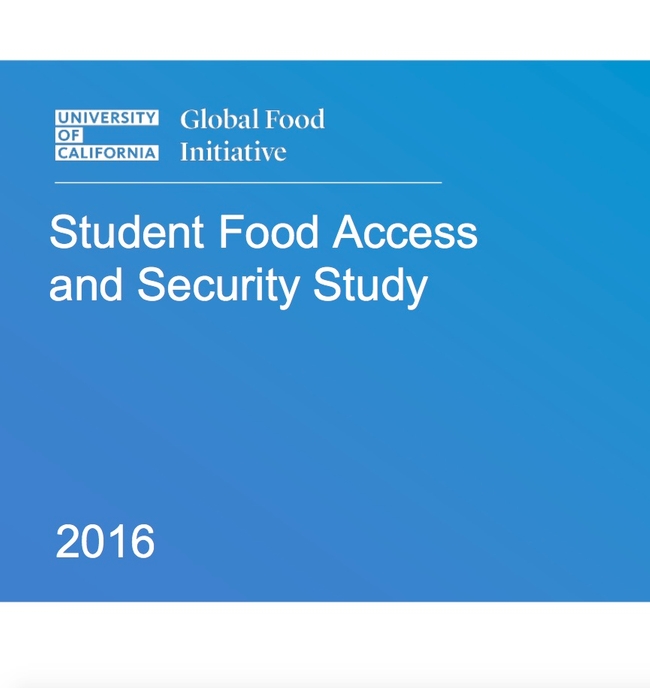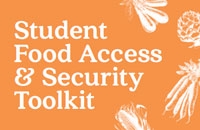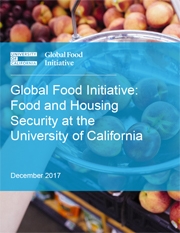As we celebrate the winter holiday season with its many joyful occasions, it's sobering to think how many people are in need of nutritious food. Millions of people are at risk of going hungry, says Feeding America. And according to groundbreaking studies by the University of California, we now know that a large number of college students are among the hungry.
A significant problem, “starving students” are not a lighthearted joke: students are going hungry and sometimes homeless, too. Food and housing insecurity among college students threatens their health, as well as their academic achievements.
 Gauging college student food insecurity
Gauging college student food insecurity

The University of California began examining the issue of student food insecurity in 2015 with the Student Food Access and Security Surveys funded by President Napolitano as part of the UC Global Food Initiative. The resulting Student Food Access and Security Study was authored by the UC ANR Nutrition Policy Institute's Lorrene Ritchie and Suzanna Martinez and UC Santa Barbara's Katie Maynard.
The Student Food Access and Security Study examined the results of two surveys administered online in spring 2015 to a random sample of more than 66,000 students across all 10 UC campuses. Fourteen percent of the students -- 8,932 undergraduate and graduate students in all -- responded.
Nineteen percent of the students responding to the survey had “very low” food security, which the U.S. Department of Agriculture (USDA) defines as experiencing reduced food intake at times due to limited resources. An additional 23 percent of survey respondents had “low” food security, which the USDA defines as reduced quality, variety or desirability of diet, with little or no indication of reduced food intake.
Added together, an alarming 42 percent of the students surveyed were food insecure.
 Communicating best practices and lessons learned
Communicating best practices and lessons learned

Soon after the Student Food Access and Security Survey results were published, partners of the UC Global Food Initiative throughout the UC system began developing the Student Food Access and Security toolkit.
The toolkit compiles best practices that have evolved at UC campuses as the university advanced efforts to nourish and support students.
Each section of the toolkit provides examples across multiple campuses to highlight the range of activities underway, as well as lessons learned.
Meeting basic needs: Food security and housing security
Expenses other than tuition can make up more than 60 percent of the cost of attending college today. The cost of living for college students has risen by more than 80 percent over the past four decades.
To better understand the prevalence of food insecurity among University of California students, the university has continued to examine the issue of student food insecurity and is beginning to assess students' housing insecurity. Food security and housing security are basic needs that students must meet to maintain their health and well-being so that they can focus on achieving academically.
 Moving forward: implementing a basic needs master plan
Moving forward: implementing a basic needs master plan

A new report, “Global Food Initiative: Food and Housing Security at the University of California” was released December 20, 2017, and an executive summary is also available. This new report recognizes student basic needs as a statewide and national issue.
UC has done much over the past three years to help students meet basic needs. The findings from the new report will help UC go even further. The new findings will inform strategies for addressing basic needs security, including the creation of a UC basic needs master plan.
Perhaps we can retire the “joke” of the starving student after all.